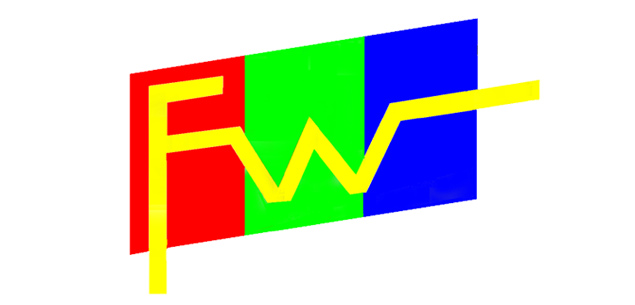Custom TFT LCD Displays: What You Need to Know Before Ordering
In today’s fast-paced technological landscape, custom TFT LCD displays have become an essential component in a wide range of industries, from consumer electronics to medical devices, automotive systems, and industrial equipment. These displays offer high-quality visuals, flexibility, and adaptability, making them a popular choice for businesses looking to enhance their products. However, ordering custom TFT LCD displays requires careful consideration to ensure you get the right product for your needs. In this comprehensive guide, we’ll explore everything you need to know before placing your order, helping you make informed decisions that will save time, reduce costs, and improve your product’s performance.
1. Understanding TFT LCD Technology
Before diving into the specifics of custom TFT LCD displays, it’s important to understand the technology behind them. TFT (Thin-Film Transistor) LCD is a type of liquid crystal display that uses thin-film transistor technology to improve image quality. Unlike traditional LCDs, TFT LCDs have a transistor for each pixel, allowing for faster response times, better color accuracy, and higher resolution.
Key Features of TFT LCD Displays:
High Resolution: TFT LCDs offer superior image clarity, making them ideal for applications requiring detailed visuals.
Wide Viewing Angles: Advanced TFT technology ensures consistent image quality even when viewed from different angles.
Fast Response Times: TFT LCDs are capable of displaying fast-moving images without blurring, making them suitable for video and gaming applications.
Energy Efficiency: Modern TFT LCDs are designed to consume less power, extending battery life in portable devices.
2. Why Choose Custom TFT LCD Displays?
While off-the-shelf displays may work for some applications, custom TFT LCD displays offer several advantages:
Tailored Solutions:
Custom displays are designed to meet your specific requirements, including size, resolution, brightness, and touch functionality. This ensures seamless integration into your product and enhances user experience.
Competitive Edge:
A custom display can differentiate your product from competitors, offering unique features and designs that cater to your target audience.
Optimized Performance:
Custom displays are engineered to perform optimally in your specific application, whether it’s for outdoor use, high-temperature environments, or low-power consumption.
3. Key Considerations Before Ordering Custom TFT LCD Displays
Ordering custom TFT LCD displays involves several critical factors. Here’s what you need to consider:
1. Display Size and Resolution
Size: Determine the physical dimensions of the display based on your product’s design and user interface requirements.
Resolution: Choose a resolution that balances image quality and cost. Higher resolutions provide sharper images but may increase production costs.
2. Brightness and Contrast
Brightness: Measured in nits, brightness is crucial for displays used in outdoor or high-ambient-light environments. Ensure the display is bright enough for your application.
Contrast Ratio: A higher contrast ratio delivers deeper blacks and more vibrant colors, enhancing the overall visual experience.
3. Touchscreen Options
Resistive vs. Capacitive: Resistive touchscreens are cost-effective and work with any input, while capacitive touchscreens offer multi-touch capabilities and better durability.
Surface Treatment: Consider anti-glare, anti-fingerprint, or anti-smudge coatings to improve usability.
4. Environmental Durability
Temperature Range: Ensure the display can operate within the temperature range of your application.
Ingress Protection (IP) Rating: For outdoor or industrial use, choose a display with an appropriate IP rating to protect against dust and water.
5. Interface and Compatibility
Interface Type: Common interfaces include LVDS, HDMI, and MIPI. Ensure the display is compatible with your system’s interface.
Driver Compatibility: Verify that the display’s driver IC is compatible with your hardware and software.
6. Power Consumption
Low Power Modes: For battery-powered devices, opt for displays with low power consumption and energy-saving features.
Backlight Efficiency: LED backlights are more energy-efficient than CCFL backlights.
7. Customization Options
Bezel Design: Custom bezels can enhance the aesthetic appeal and functionality of your product.
Mounting Options: Choose from various mounting methods, such as adhesive, screw, or snap-in, to ensure secure installation.
8. Regulatory Compliance
Certifications: Ensure the display meets industry standards and certifications, such as RoHS, REACH, and CE.
4. The Custom TFT LCD Display Ordering Process
Understanding the ordering process can help streamline your project and avoid potential pitfalls. Here’s a step-by-step overview:
Step 1: Define Your Requirements
Clearly outline your display specifications, including size, resolution, brightness, touch functionality, and environmental requirements.
Step 2: Choose a Reliable Supplier
Partner with a reputable manufacturer or supplier with experience in custom TFT LCD displays. Look for companies with a proven track record, technical expertise, and excellent customer support.
Step 3: Request a Prototype
Before mass production, request a prototype to test the display’s performance and compatibility with your product.
Step 4: Review and Approve the Design
Work closely with the supplier to review the design and make any necessary adjustments.
Step 5: Mass Production
Once the prototype is approved, proceed with mass production. Ensure the supplier adheres to quality control standards.
Step 6: Post-Sales Support
Choose a supplier that offers ongoing support, including troubleshooting, repairs, and replacements.
5. Benefits of Working with a Professional Supplier
Partnering with a professional supplier for your custom TFT LCD displays offers several advantages:
Expertise and Experience
A knowledgeable supplier can guide you through the design and production process, ensuring you get the best possible product.
Cost Savings
Experienced suppliers can optimize the design to reduce costs without compromising quality.
Faster Time-to-Market
With streamlined processes and efficient production, a professional supplier can help you launch your product faster.
Quality Assurance
Reputable suppliers adhere to strict quality control standards, ensuring reliable and durable displays.
6. Applications of Custom TFT LCD Displays
Custom TFT LCD displays are used in a wide range of industries and applications, including:
Consumer Electronics
Smartphones, tablets, gaming consoles, and wearable devices.
Automotive
Infotainment systems, instrument clusters, and rear-seat entertainment.
Medical Devices
Patient monitors, diagnostic equipment, and surgical displays.
Industrial Equipment
Control panels, HMI (Human-Machine Interface) systems, and automation displays.
Retail and Hospitality
POS (Point of Sale) systems, digital signage, and kiosks.
7. Common Challenges and How to Overcome Them
Ordering custom TFT LCD displays can present challenges, but with the right approach, you can overcome them:
Challenge 1: High Costs
Solution: Optimize the design and work with a supplier to find cost-effective solutions without compromising quality.
Challenge 2: Long Lead Times
Solution: Plan ahead and choose a supplier with efficient production processes.
Challenge 3: Compatibility Issues
Solution: Test prototypes thoroughly and ensure clear communication with your supplier.
8. Future Trends in TFT LCD Displays
The TFT LCD industry is constantly evolving, with new trends shaping the future of display technology:
Flexible Displays
Flexible TFT LCDs are gaining popularity for their versatility and innovative applications.
Higher Resolutions
As demand for sharper images grows, displays with 4K and 8K resolutions are becoming more common.
Improved Energy Efficiency
Advances in backlight technology and low-power modes are making TFT LCDs more energy-efficient.
Integration with IoT
TFT LCDs are increasingly being integrated with IoT devices, enabling smarter and more connected systems.
9. Conclusion
Custom TFT LCD displays offer unparalleled flexibility, performance, and customization options, making them an ideal choice for a wide range of applications. By understanding the key considerations and working with a reliable supplier, you can ensure a smooth ordering process and achieve the best results for your product. Whether you’re developing a cutting-edge consumer device or a robust industrial system, custom TFT LCD displays can help you stay ahead of the competition and meet the demands of today’s tech-savvy consumers.
Ready to Order Your Custom TFT LCD Display?
Contact us today to discuss your requirements and get a free quote. Our team of experts is here to help you create the perfect display solution for your needs. Let’s bring your vision to life!

